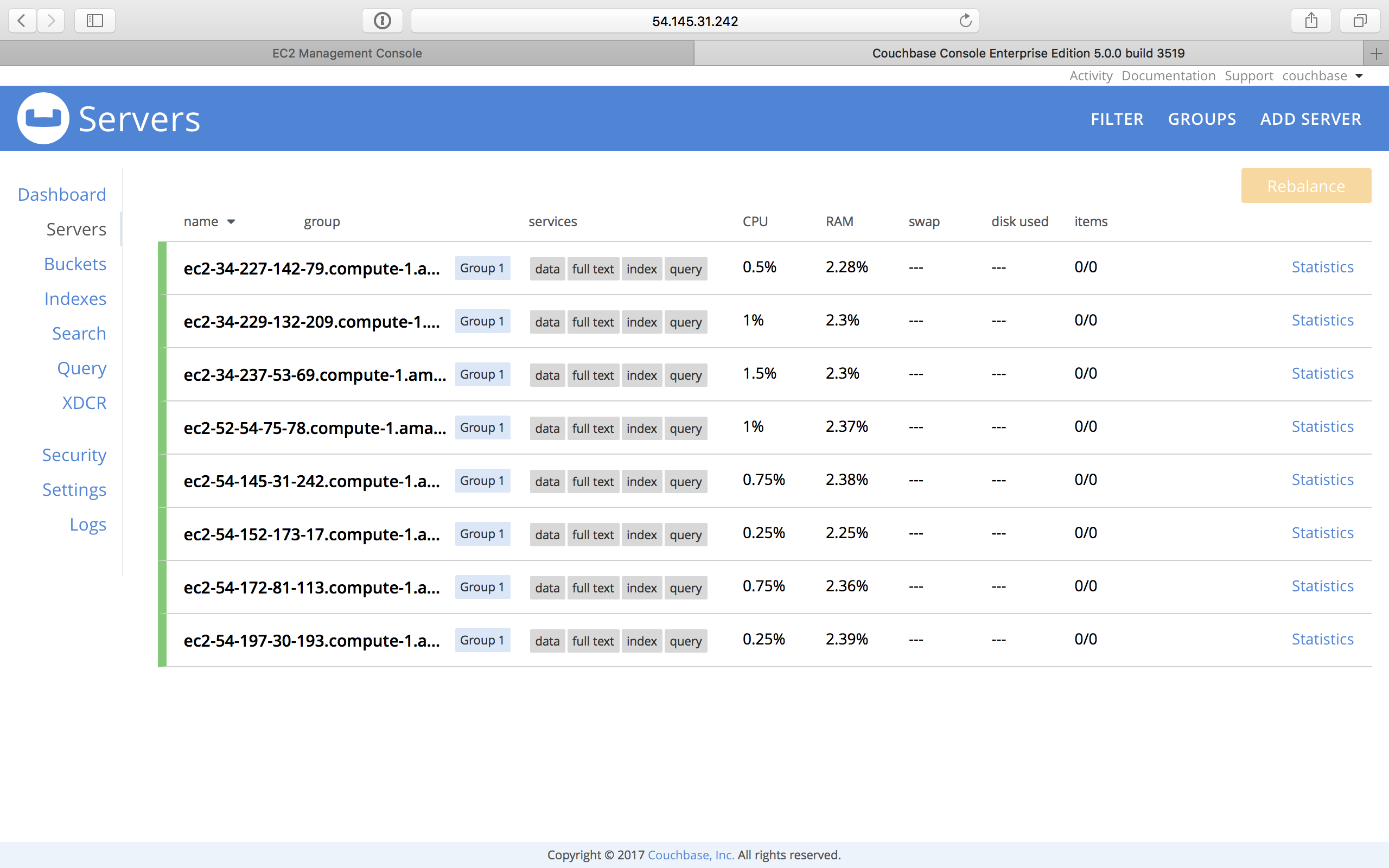Deploying Couchbase from AWS Marketplace
Prerequisites
-
You must have an Amazon Web Services (AWS) account. If not, create one here before proceeding. For information on how to do so, see the AWS documentation for Creating an AWS Account.
Deploying Couchbase Enterprise
| The CloudFormation templates are provided as a starting point and may be customized as needed. Note that additional post deployment setup may be required. |
-
Log in to your account on the Amazon Web Services Marketplace, search for
Couchbaseand select Couchbase Enterprise Edition. Alternately, you can click here to go to the Couchbase Enterprise Edition product page directly. -
The Couchbase Enterprise product page provides a quick overview of the product offering and useful links. Click Continue to Subscribe.
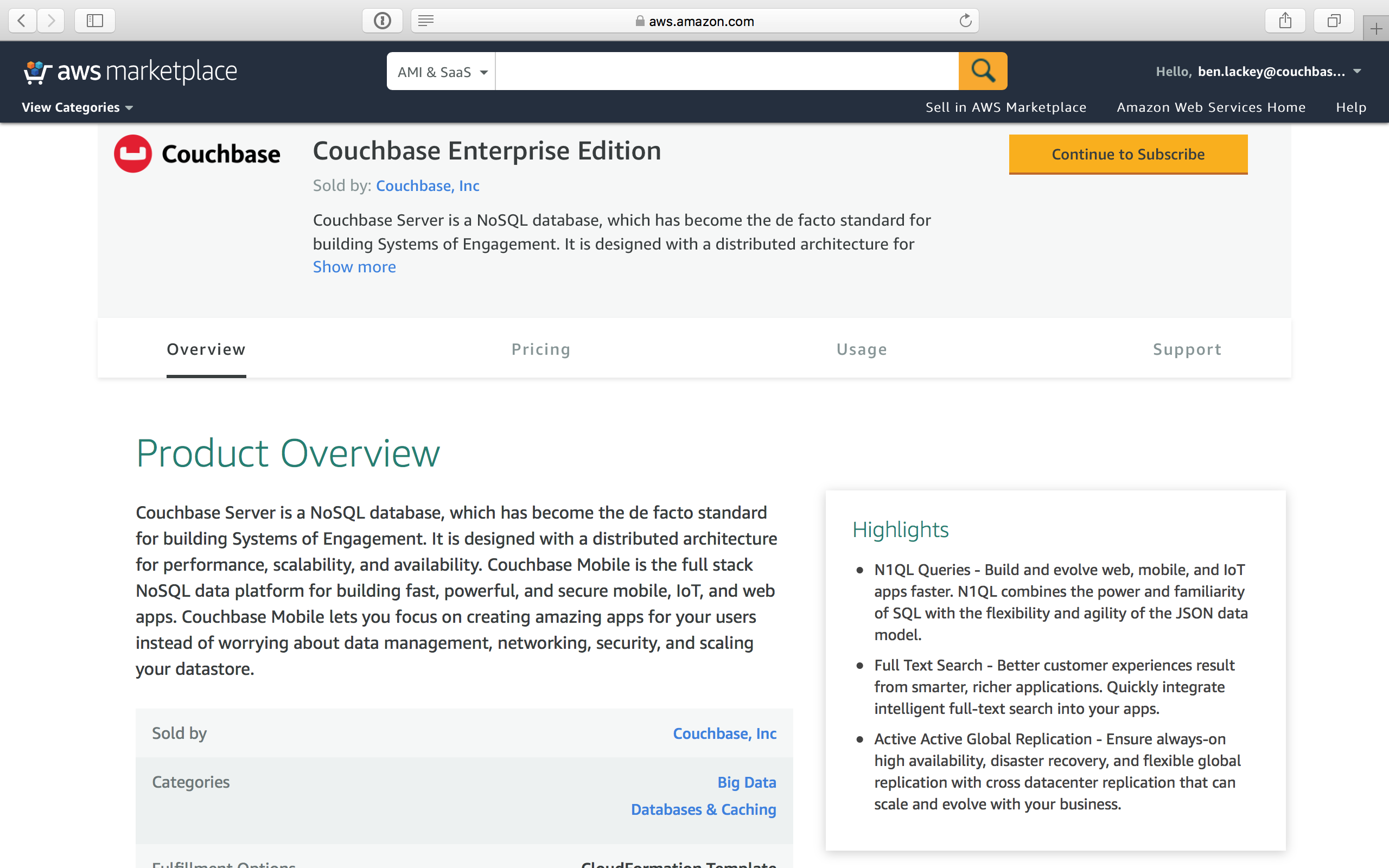
-
On the Subscribe screen, accept the terms and conditions for this software.
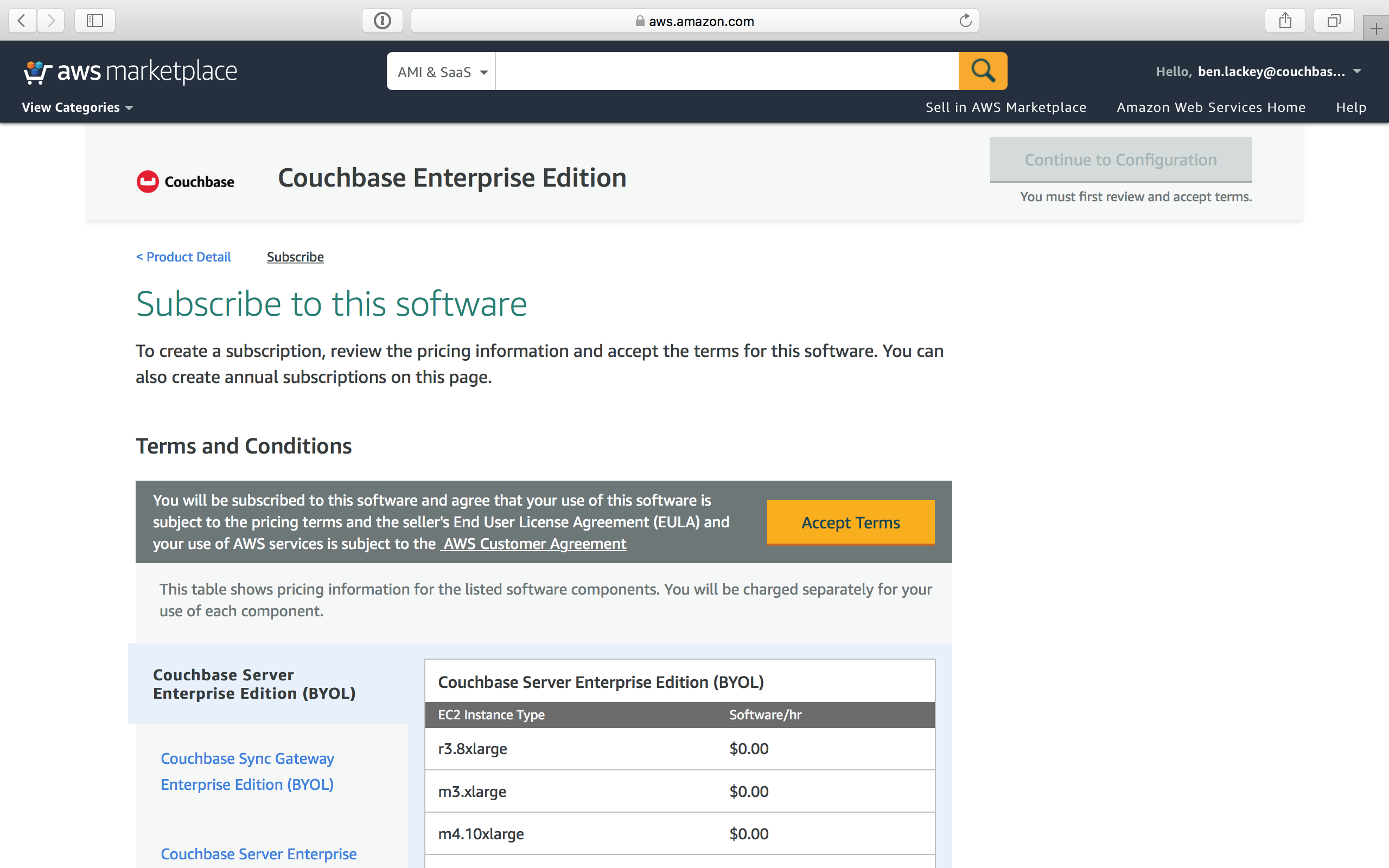
-
Once your request is processed, you’ll be able to proceed by clicking Continue to Configuration.

-
Configure the software by selecting the how you wish to deploy the software, and providing information required to configure the deployment. Then click Continue to Launch.

-
Review your configuration and then choose Launch CloudFormation to launch your configuration through the AWS CloudFormation console.
These templates are provided as a starting point and may be customized as needed. Note that additional post deployment setup may be required. 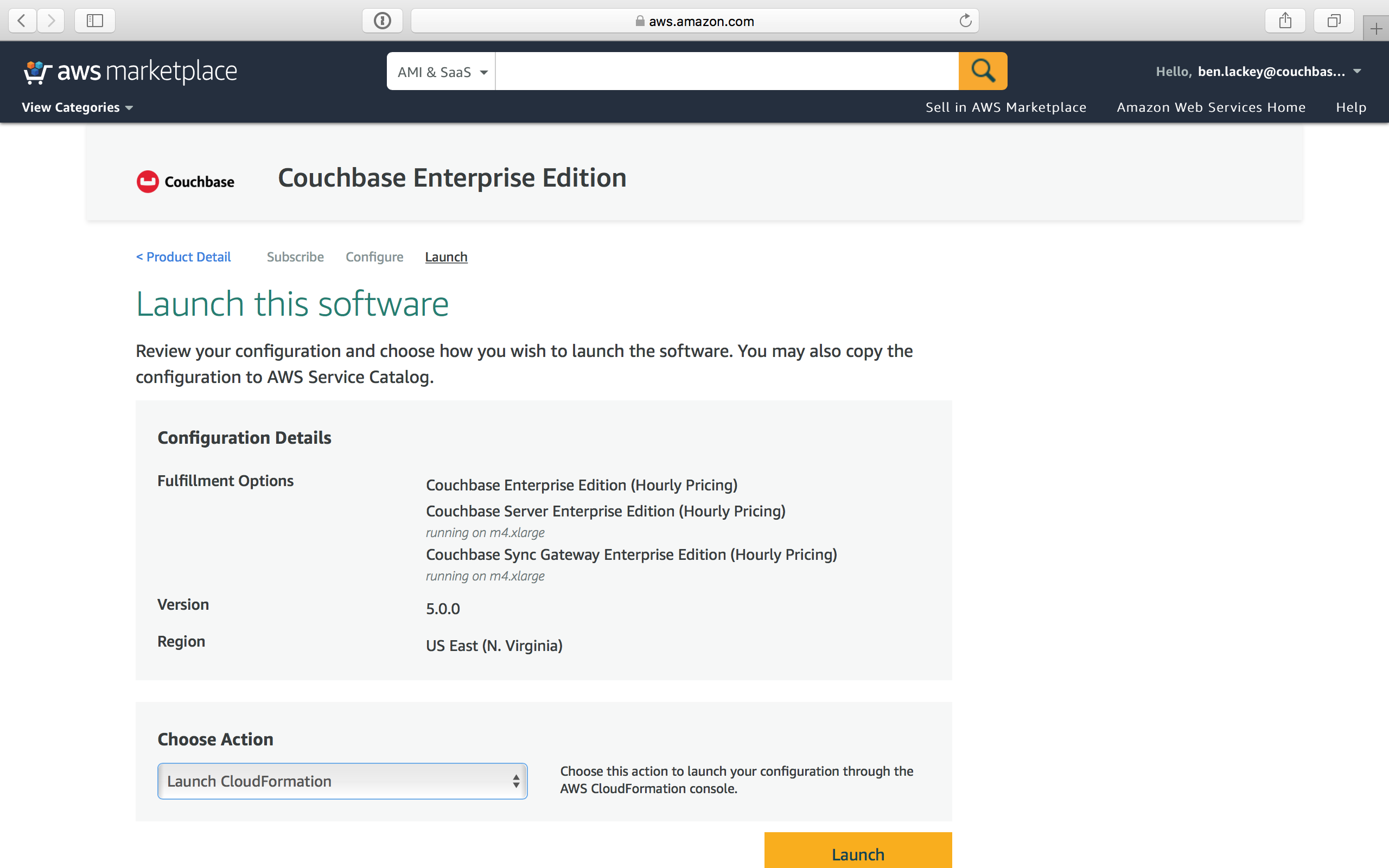
-
You will be redirected to the AWS CloudFormation Console where you must create a stack. A stack is a group of related resources that you manage as a single unit. Select the
Amazon S3 template URLand then click Next.
-
Enter the stack name and parameter values. You can choose to use the default values defined in the AWS CloudFormation template or edit them. Then click Next.
The user name and password will be required to log in to the Couchbase Server Web Console later. 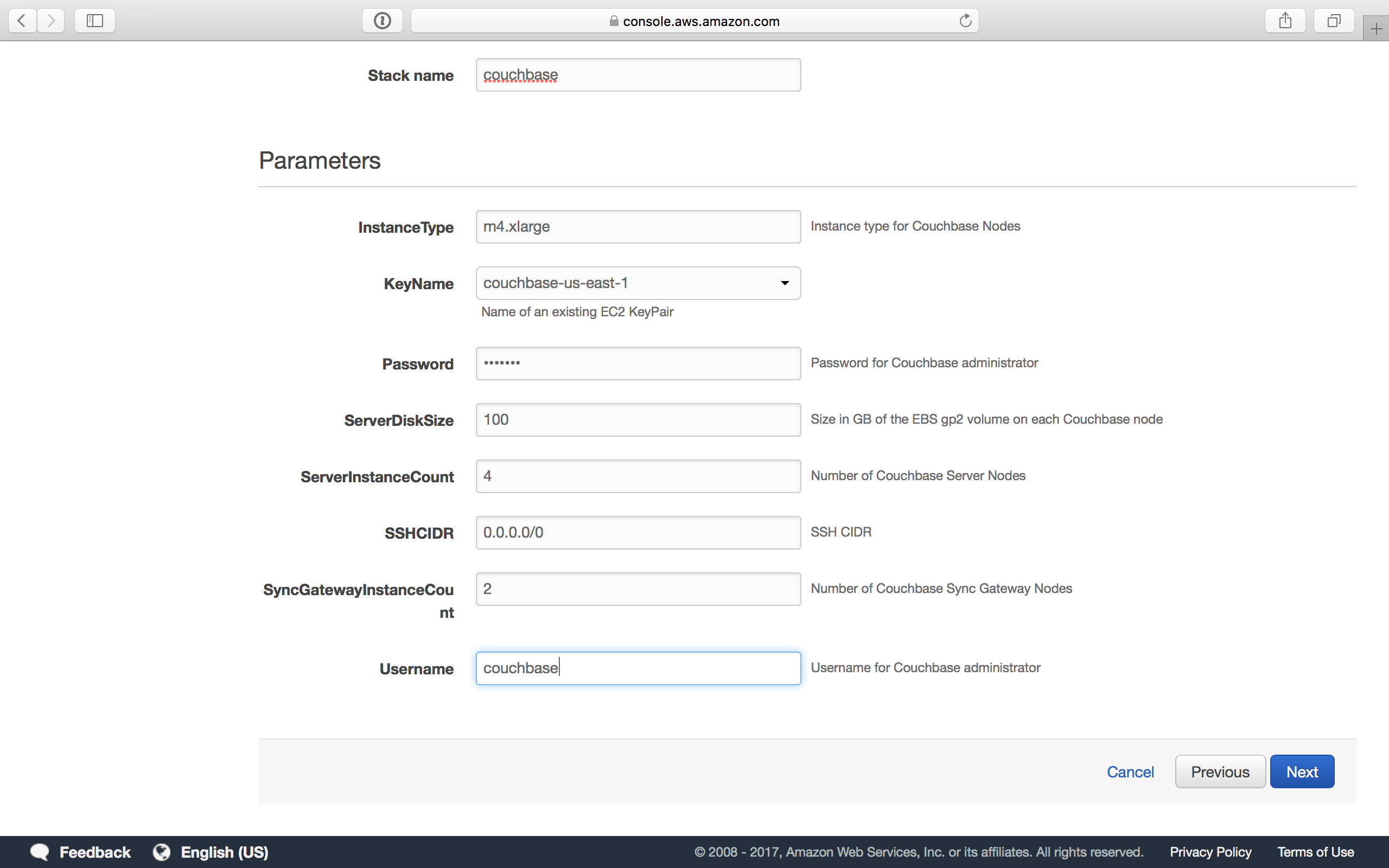
-
Optionally, you can specify tags for resources in your stack and the required permissions. Click Next.

-
Acknowledge that AWS CloudFormation may create IAM resources that provide entities access to make changes to your AWS account and click Create.
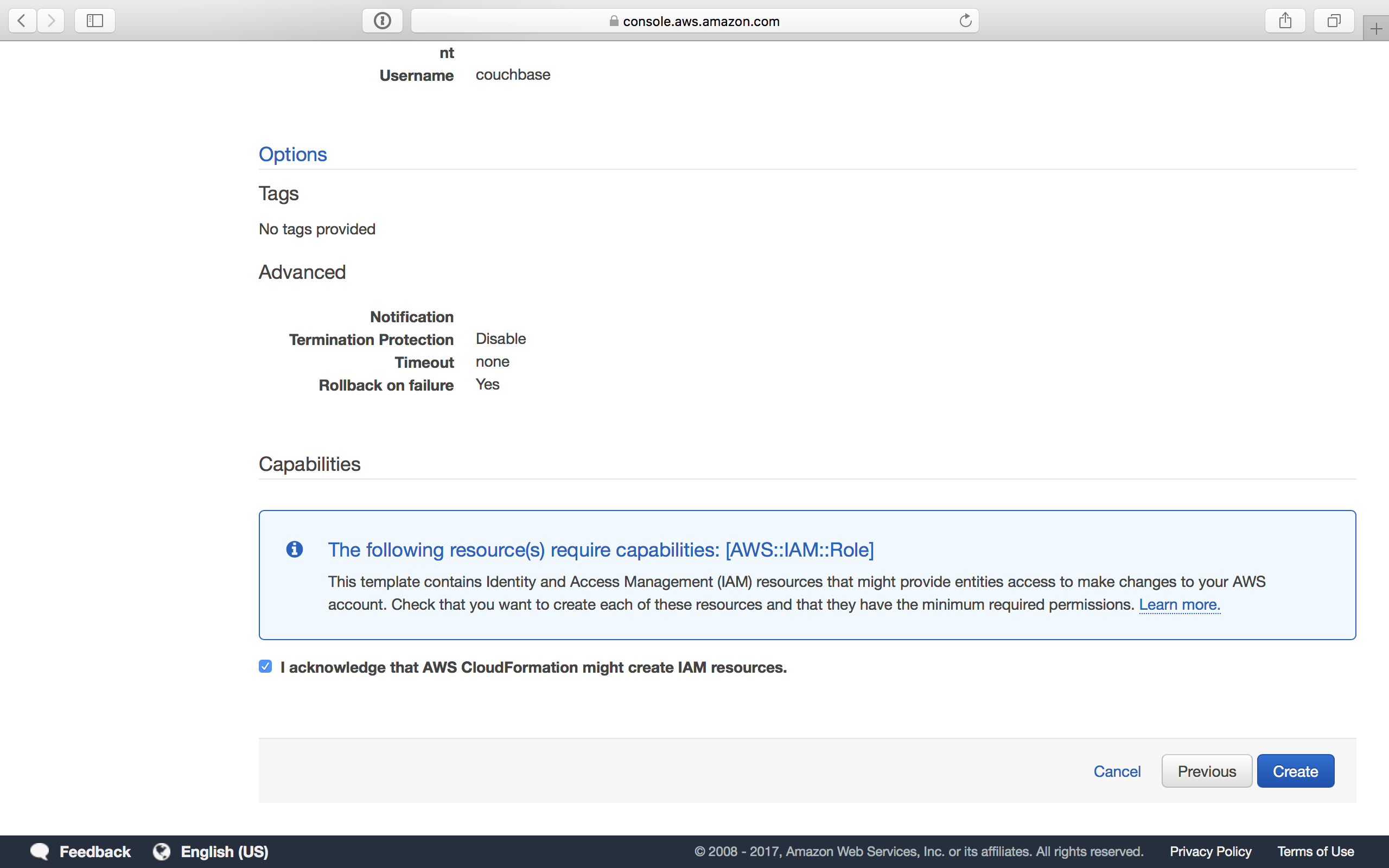
-
The stack creation takes a short while to complete and the status is displayed on the screen. After the process is completed, you should see a
CREATE_COMPLETEstatus.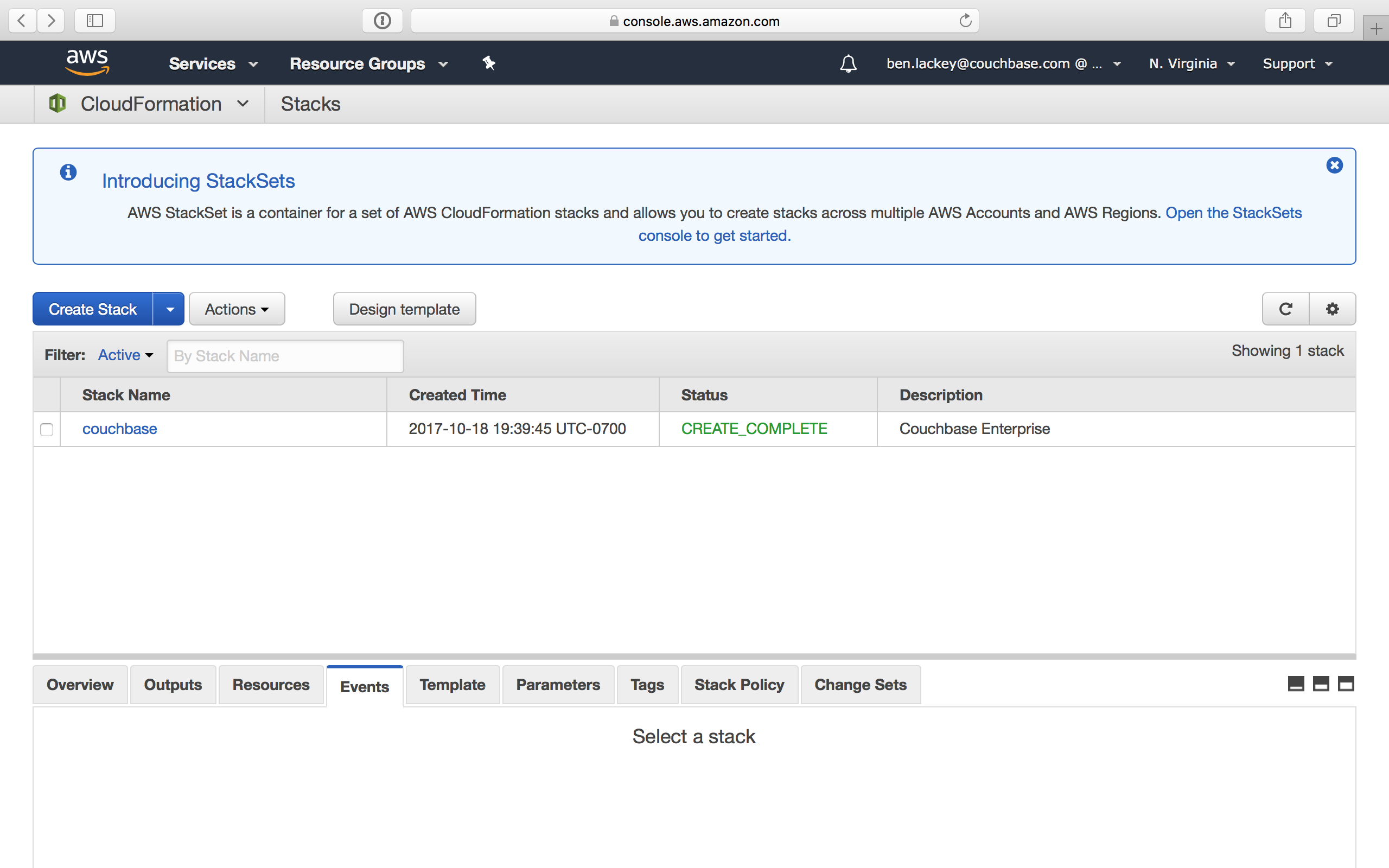
Logging in to Your Couchbase Cluster
After the deployment is completed, you can explore the resources created from the AWS EC2 dashboard.
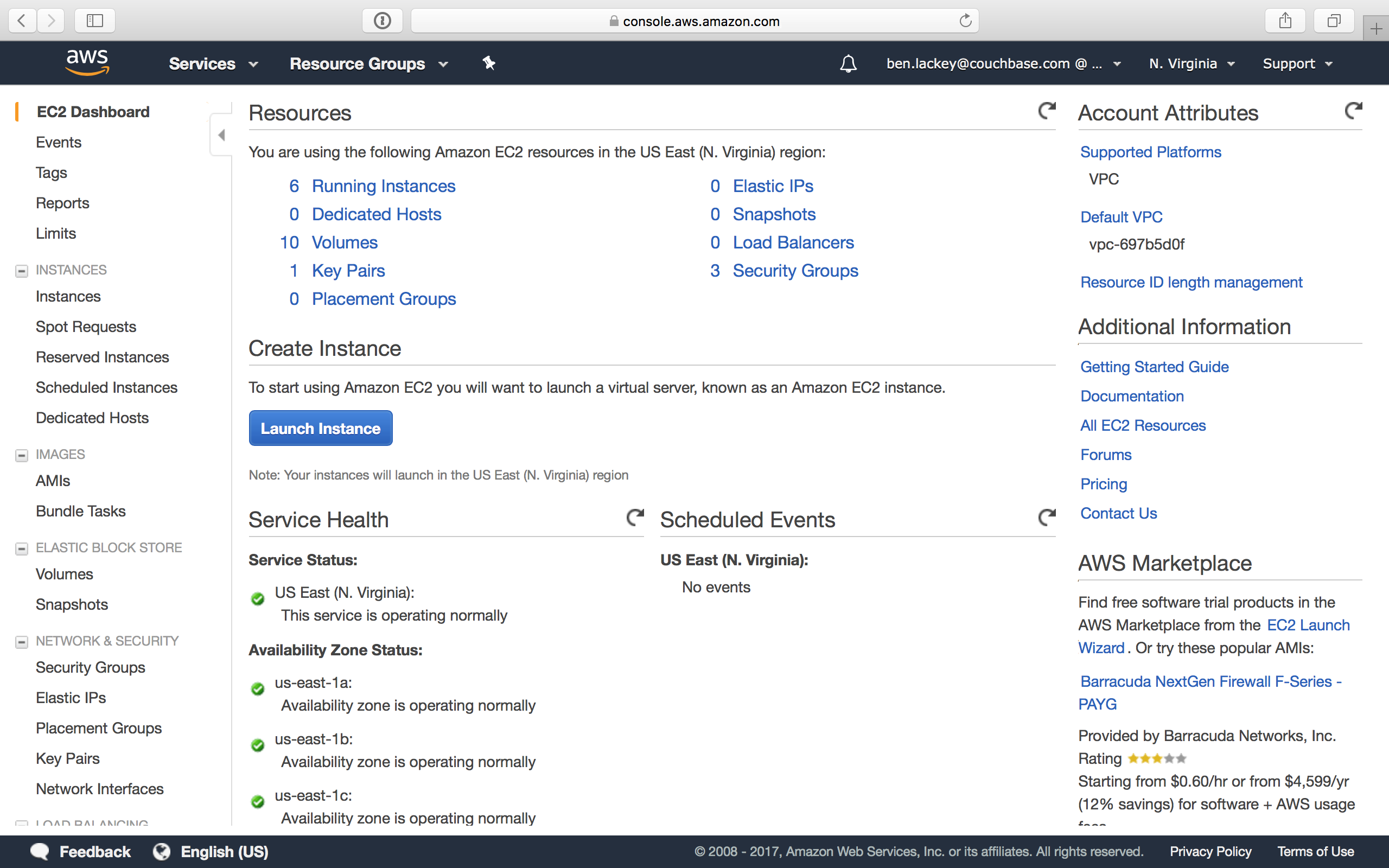
Click Running Instances under Resources to view the running instances of Couchbase Server and Sync Gateway. You can select a particular instance to view details such as the instance ID, state, IPv4 Public IP, and so on.
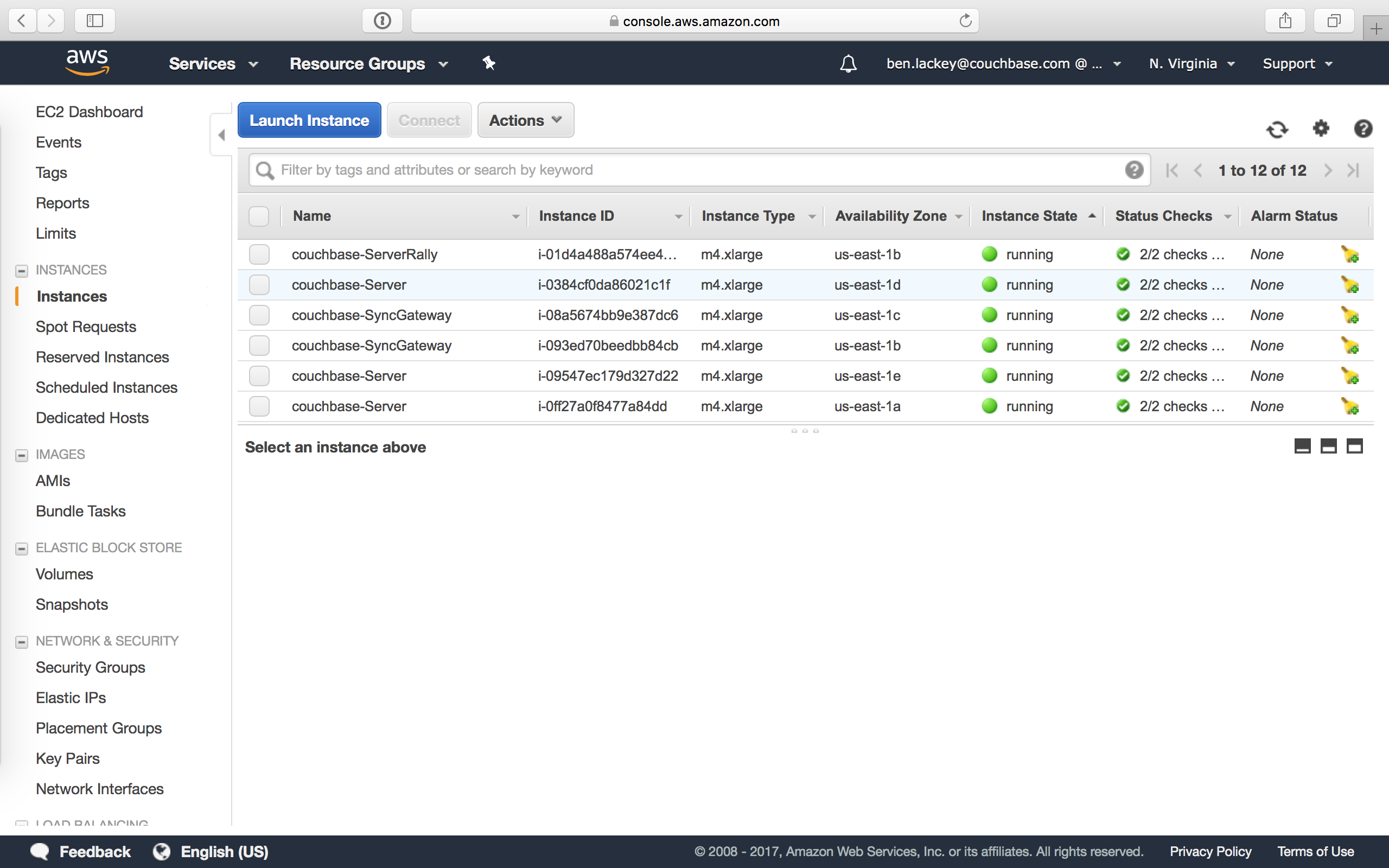
-
This step describes how to log in to the Couchbase Server Web Console.
-
From the AWS EC2 console, select a running Couchbase Server Instance and copy the IPv4 Public IP.
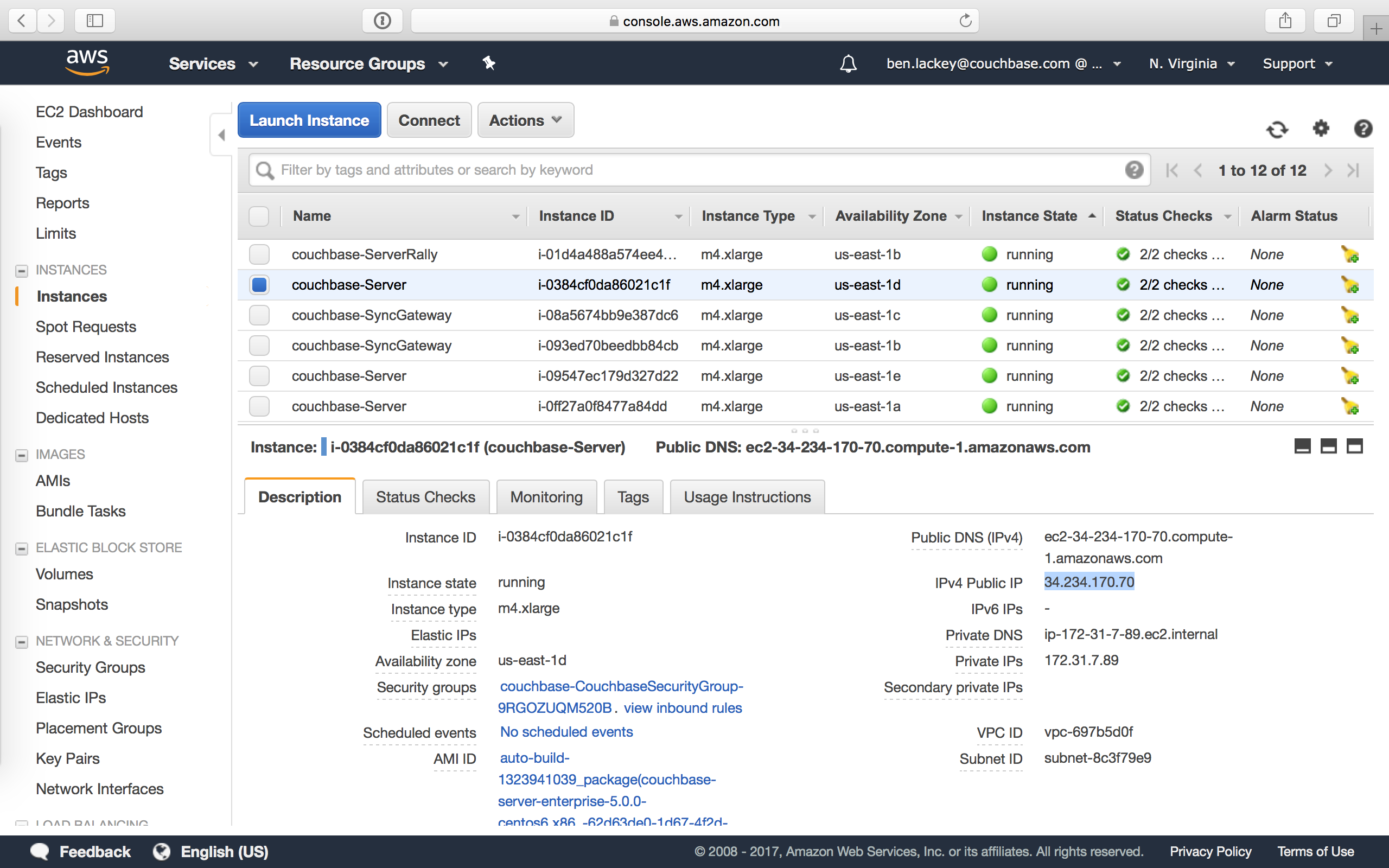
-
Open a browser tab and enter the copied IPv4 Public IP along with port 8091 as <ipv4-public-ip>:8091 to open the Couchbase Server Web Console.
-
Enter the Administrator user name and password you configured when creating the stack to sign in.
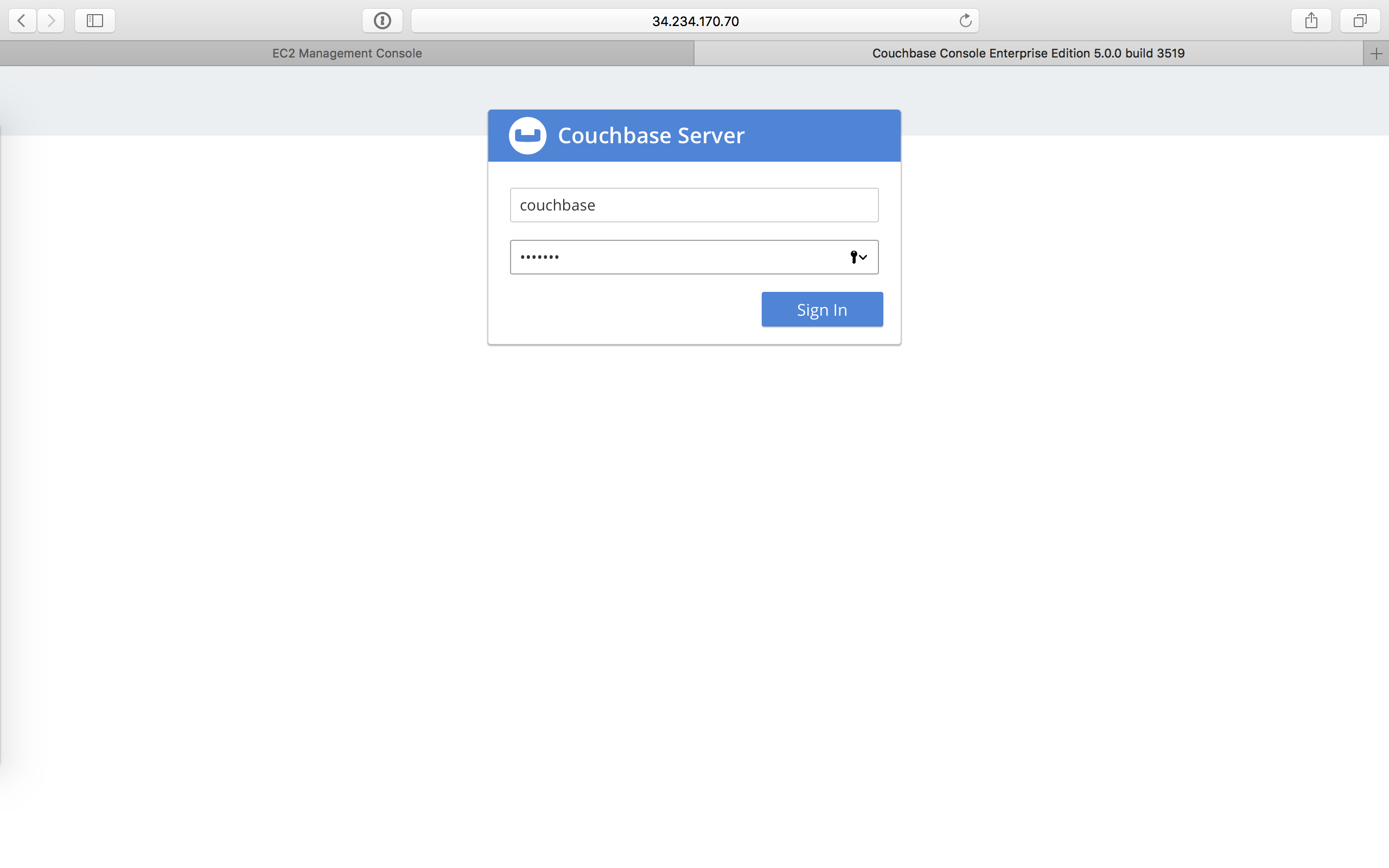
-
Once you log in successfully, you can see the status of your Couchbase Server cluster on the dashboard.
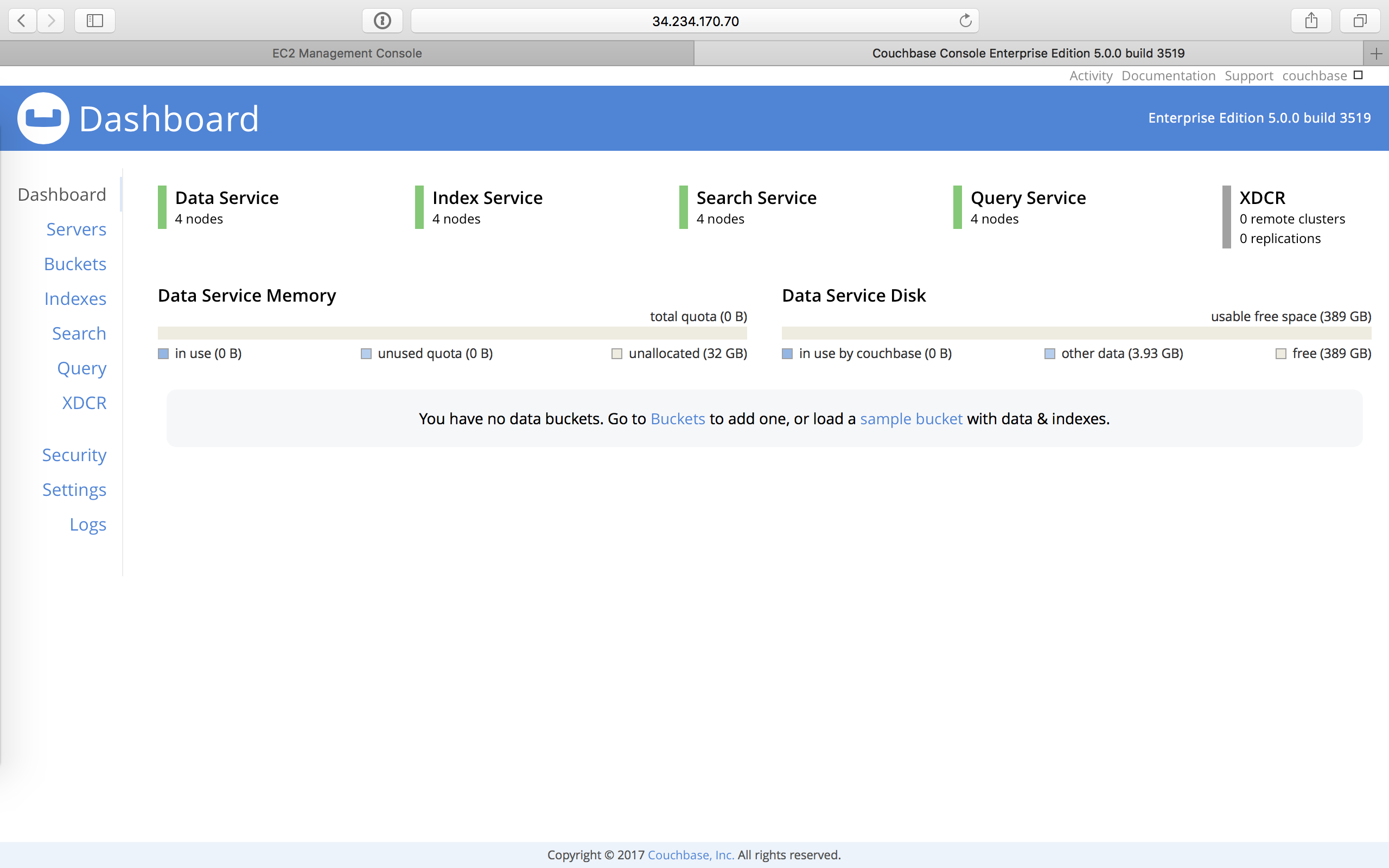
Click the Servers tab to explore the sever nodes that have been created.
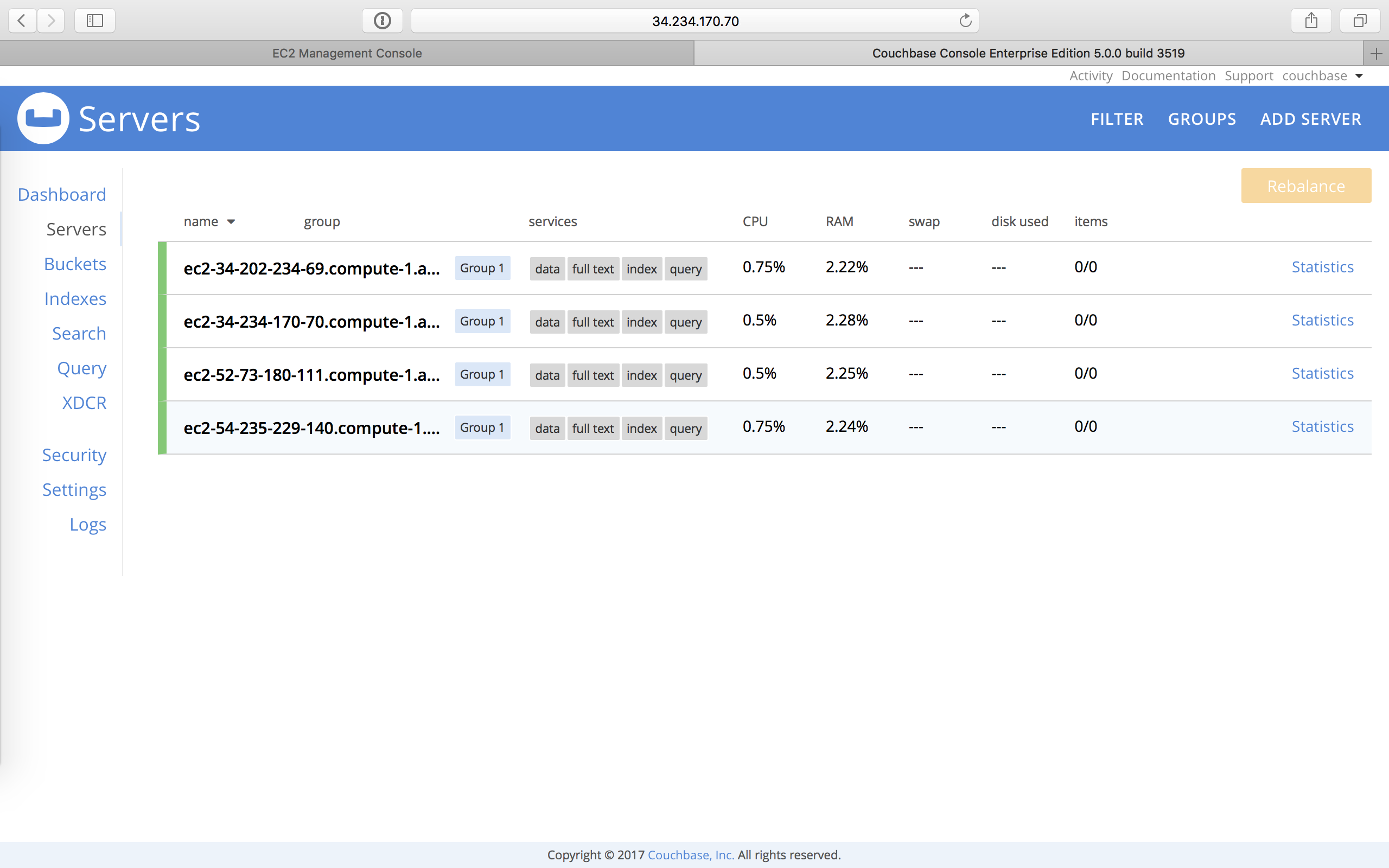
-
-
This step describes how to log in to the Sync Gateway Admin portal.
-
From the AWS EC2 console, select a running Couchbase Sync Gateway instance and copy the IPv4 Public IP.
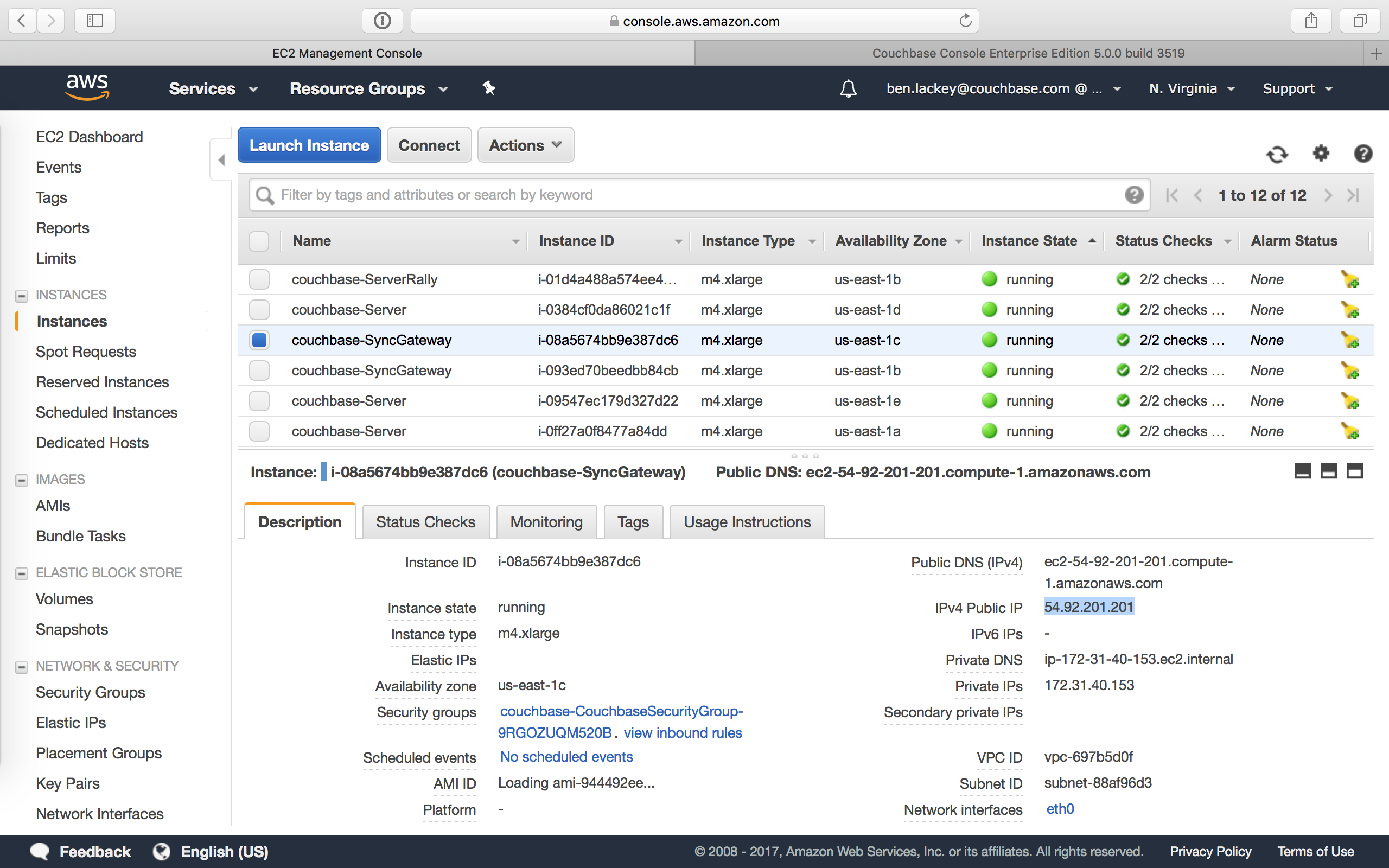
-
Open a browser tab and enter the copied IPv4 Public IP along with port 4984 as <ipv4-public-ip>:4984. This opens the interface for Couchbase Sync Gateway which is already setup and configured to connect to an empty bucket on the cluster.
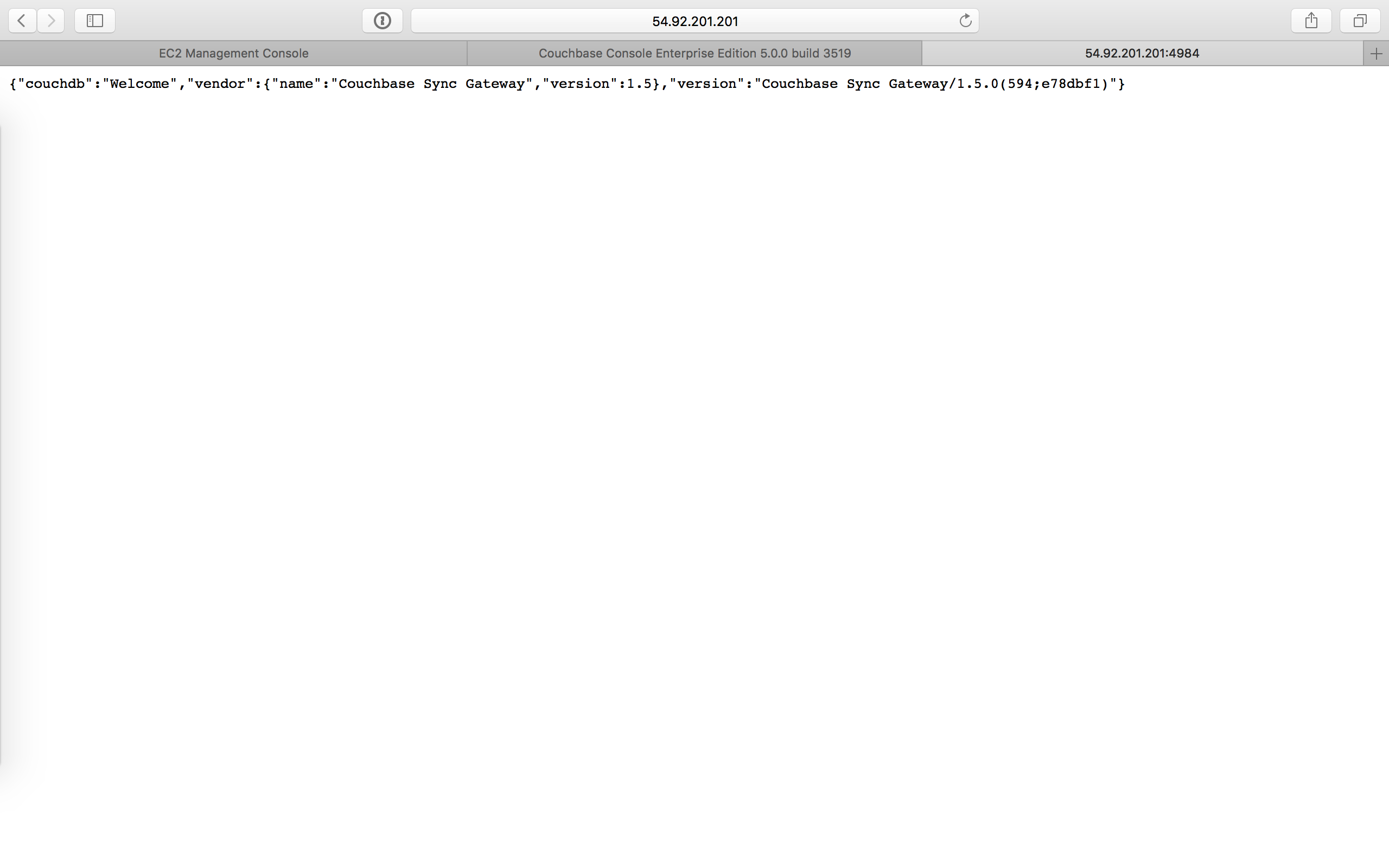
-
Open another browser tab and enter <ipv4-public-ip>:4984/_admin/ to open the Couchbase Sync Gateway Admin Portal.
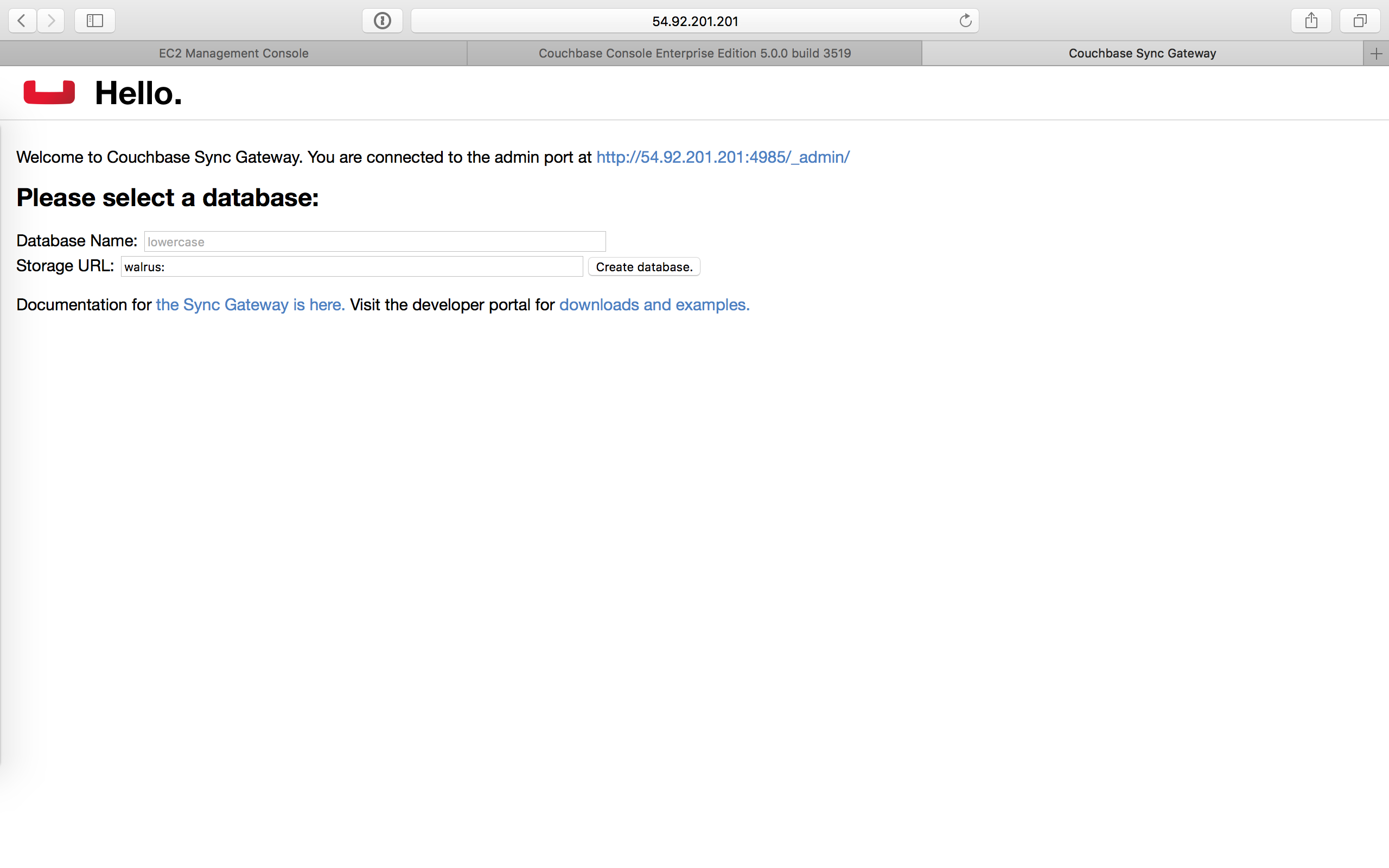
-
Scaling Your Couchbase Cluster
This section describes how to scale up your cluster in three simple steps.
-
Log in to the AWS EC2 Console and select Instances in the left navigation to list all the available instances. Select the Couchbase Server instance you wish to scale up.

-
On left navigation, select Auto Scaling Groups.
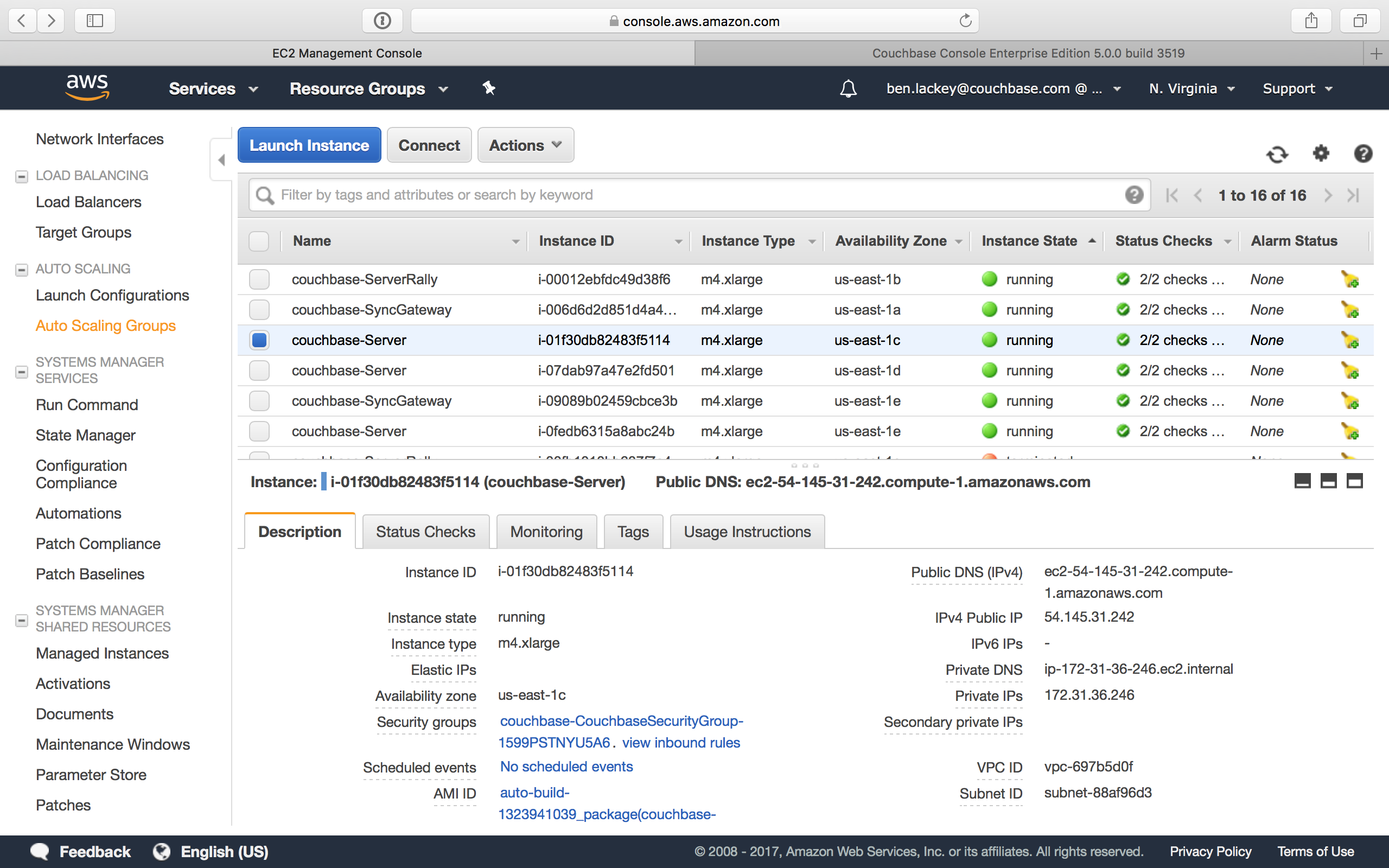
-
Edit the selected Auto Scaling Group and then Save. In the following screen captures, you’ll see that the number of server instances has been updated from 4 to 8.
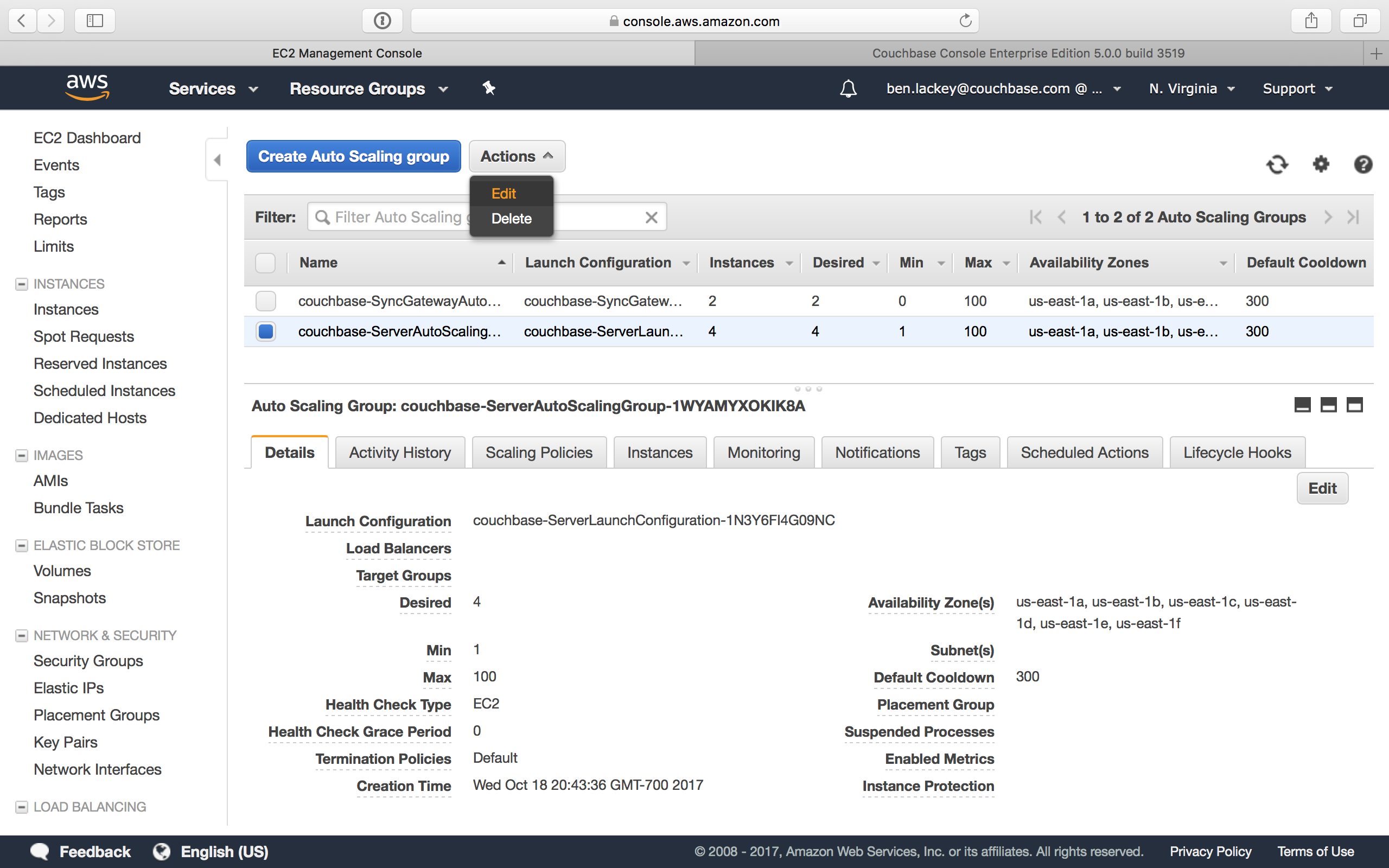
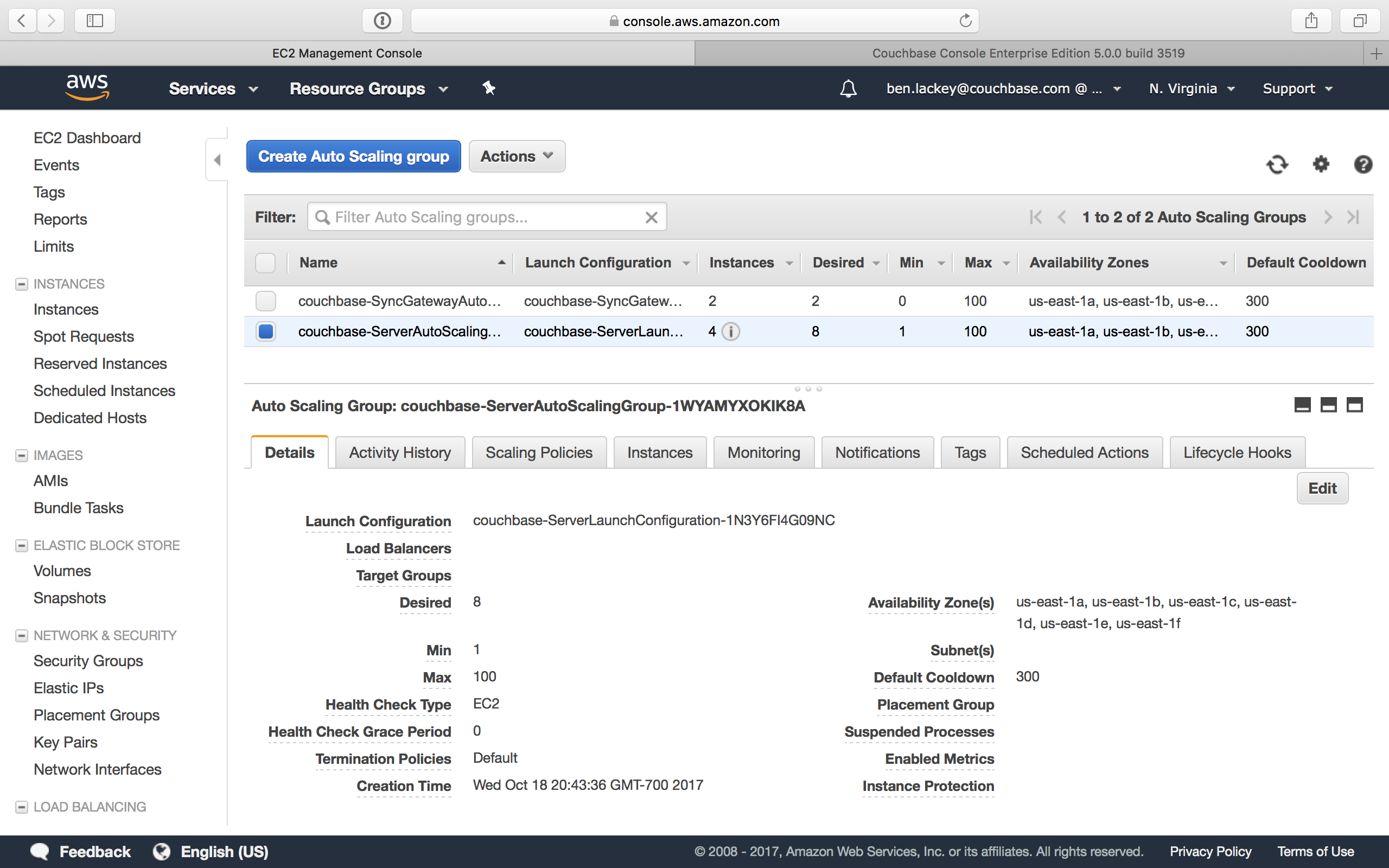
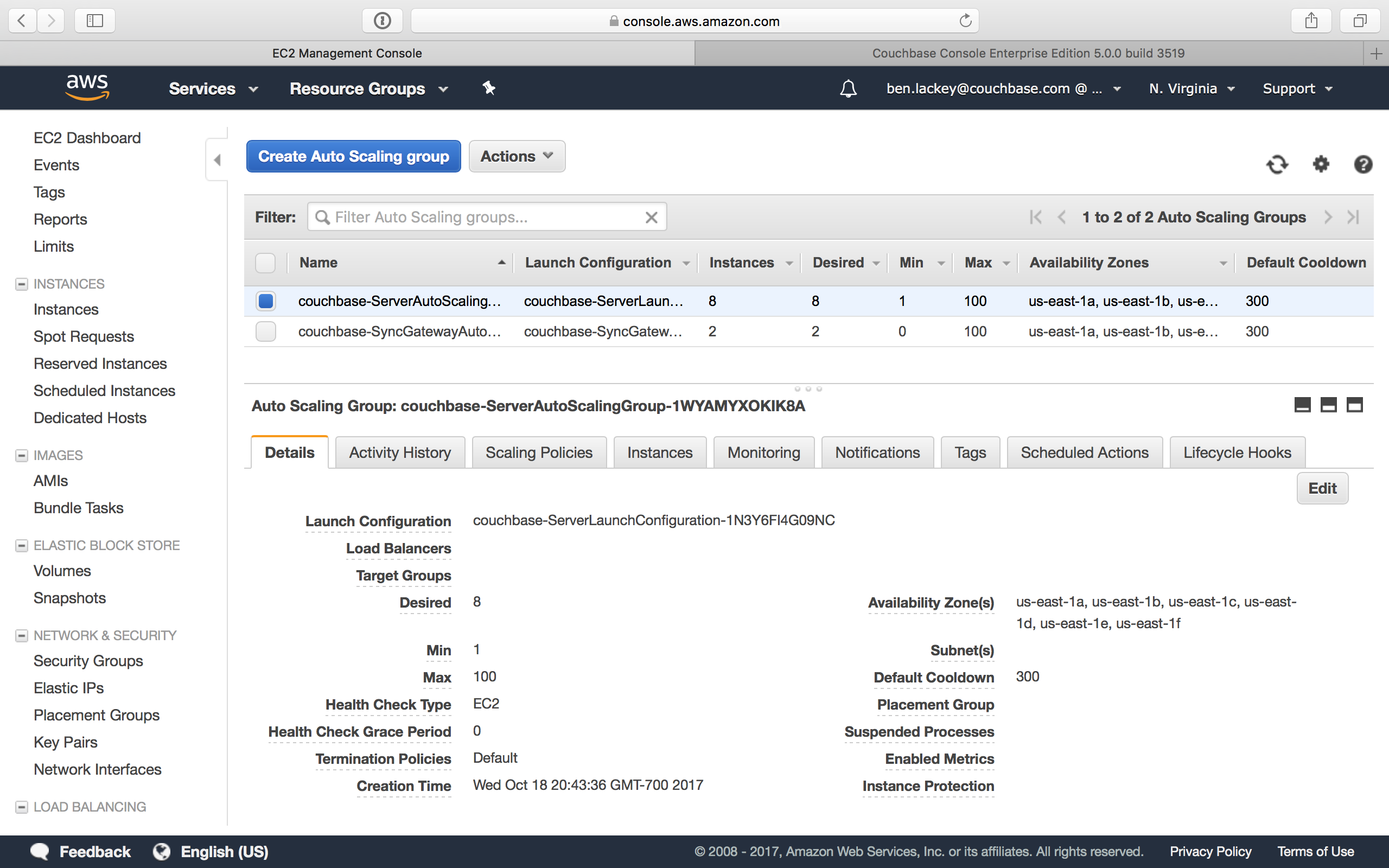
-
On a different browser tab, you can log in to the Couchbase Server Web Console to see the additional server nodes that were added to your cluster.
